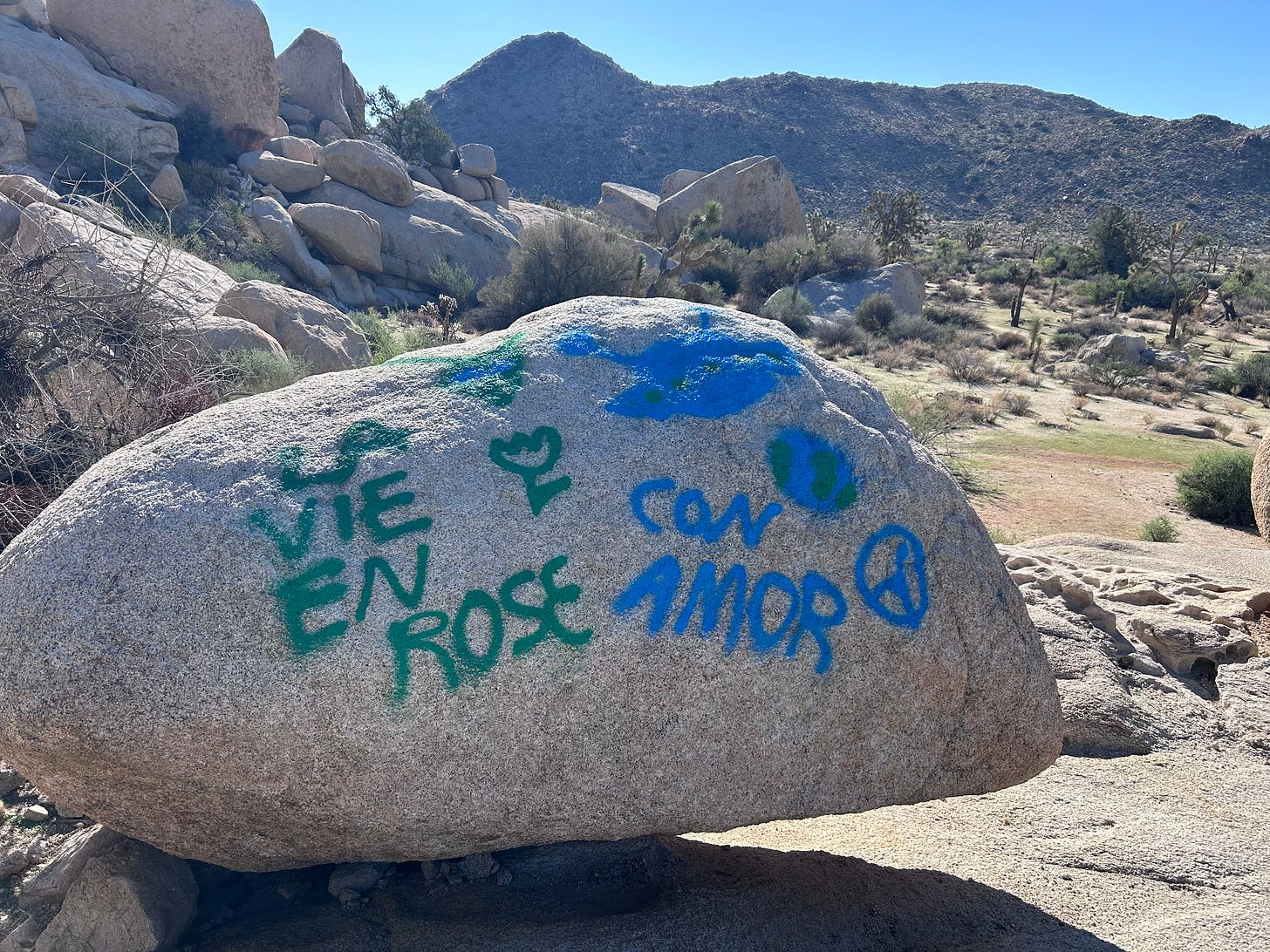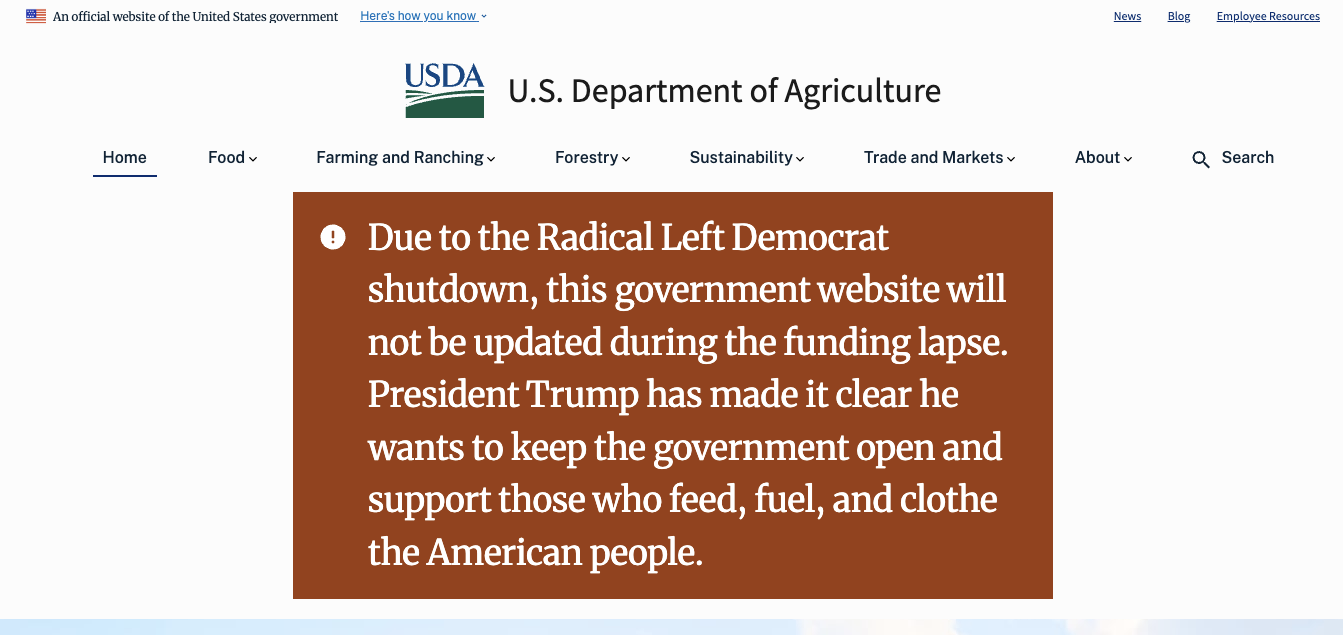Twentynine Palms Faces Federal Shutdown
What does it mean for the community and for Joshua Tree National Park?

At midnight on Tuesday, September 30, 2025, the federal government shut down. Many local federal employees have been furloughed, and ongoing programs have ceased. Joshua Tree National Park law enforcement—including search and rescue services—and maintenance staff will continue to be present but will be working without pay until the shutdown ends. Park gates will be open, but fees will not be collected, which cuts off a vital revenue stream for the park.1
Meanwhile, some services across government will limp along, while others will halt completely. Veterans’ medical care and crisis lines will stay open. Military training continues, but new defense contracts stop. The Postal Service keeps operating.
Many community members rely on Social Security, Veterans Administration payments, and Medicare and Medi-Cal. These services will continue, but with large numbers of staff furloughed or working without pay. Benefit verifications, card replacements, and corrections will slow. This New York Times article outlines how federal workers are affected (gift link).
It May Not Be as Bad as Last Time
To some locals, the words “government shutdown” bring back unpleasant memories. For those who lived here through the 2018–2019 closure, which lasted 35 days, the images remain vivid: overflowing trash cans, toilets that stopped working, visitors driving off-road through protected landscapes, and volunteers scrambling to hold the line in Joshua Tree National Park.
However, the park will have normal Law Enforcement, Emergency Services, campground maintenance, and Fee Rangers (not collecting fees) available and patrolling the park. Campgrounds will continue to stay open and the only closed visitor centers will be Black Rock, Indian Cove, and Cottonwood.
The current federal shutdown could hit the local economy harder this time. After a sluggish summer, the tourist season usually begins ramping up with cooler autumn weather. Local businesses hoped fall would bring relief as visitors return to the desert, filling hotels and short-term rentals, and buying groceries, gas, and meals.
Independent shop owners who looked forward to fall and winter visitor surges may find that the shutdown will bring disappointing revenue. The tourism numbers in Twentynine Palms and in California have already dropped, according to Tourism Board Improvement District Marketing Director Breanne Dusastre. At the September 9, 2025 City Council meeting, she noted headwinds faced by the tourism industry in California in 2025-2026. Citing the Visit California Visitation and Spend Forecast, Dusastre highlighted the projected 9% drop in international visitors and flat domestic travel California faces.
In 2024, more than 2.9 million visitors streamed into the national park, down from a high of 3.2 million people the year before. According to a report presented by Superintendent Jane Rodgers to the Twentynine Palms City Council in 2024, park tourism supports 1,630 jobs in desert communities that generates nearly $214 million in labor income.
The Joshua Tree National Park Visitor and Cultural Center at Freedom Plaza will remain open.2 At the beginning of the year, Superintendent Rodgers expressed concern that reductions in federal spending and possible government shutdowns would mean the Freedom Plaza visitor center would close.
The Visitor Center had been leased to the National Park Service through the City of Twentynine Palms. Superintendent Rodgers pushed for the Joshua Tree National Park Association (JTNPA), the park’s non-profit arm, to assume the lease of the visitor center. This way, it could remain open if federal spending cuts were to occur.
At the February 25, 2025, City Council meeting, Councilmembers voted 5-0 to transfer the lease from Joshua Tree National Park to the Park Association. As City Manager Stone James said at the time,
Although rangers will not be able to staff the building, with the maps and the expertise the association has developed, that they would be able to provide substantially the same information as the rangers currently do.
There is no good data from the last long shutdown on the economic impact on Twentynine Palms and the Morongo Basin. Some residents believe that more visitors will come because they can enter the park without paying the entrance fee or experiencing the long line of cars that stack up at the West Entrance kiosk on weekends.
Still, advocates warn conditions could be worse. Kate Groetzinger of the Center for Western Priorities pointed to a 24% loss in permanent National Park Service staff under President Trump’s second term. “It will be worse this time than it was last time around, simply because the parks are already struggling.” According to the Mojave Desert Land Trust, the “federal shutdown exacerbates an already critical situation. Public lands stewards are already stretched thin after this year’s workforce reductions, and the One Big, Beautiful Bill’s $267 million cut to National Park Service and Bureau of Land Management funding.”
Shutdown + Buyouts = Low Morale
Shutdowns don’t just hit businesses and community members who work at or depend on the park. Many Twentynine Palms residents draw a paycheck from the federal government. Some work at the Marine Corps Air Ground Combat Center. Some civilian workers for the Department of Defense have been furloughed. Others face delays in paychecks, even as military operations continue.
The tension between local initiatives and federal responsibility is keenly felt in Twentynine Palms because of the city’s dual dependence on the park and on the Marine base.
Earlier this year, more than 100,000 federal civil servants accepted buyouts under pressure, and on September 30, those who accepted the terms of the Deferred Resignation Program stepped away from their jobs. It is unknown how many workers this program affects locally, but it has contributed to lower morale overall.
What’s Next? Who Knows?
As of October 1, Joshua Tree National Park remains open — though its superintendent is furloughed and many services are suspended. Businesses, nonprofits, and city officials are trying to hold the pieces together, just as they did five years ago.
But the memory of that last shutdown is still raw. Residents know that each day of closed restrooms, unpaid workers, and suspended services chips away at the fragile balance that keeps this community running.
The national debate over budgets and politics may play out in Washington, but its consequences land here.

Kat Talley-Jones is a contractor who develops interpretive exhibits for the National Park Service and is a Preventative Search and Rescue volunteer at Joshua Tree National Park. Heidi Heard, who retired from Joshua Tree National Park in 2021, provided invaluable links to news stories, as did Cindy Bernard and Jonathan Hume.
Leave your thoughts in the comments below. Please note that we do not allow anonymous comments. Please be sure your first and last name is on your profile prior to commenting. Anonymous comments will be deleted.
Feel free to share this article!
We are $155 away from $7000 in paid subscriptions! Who’s going to take us over $7,000? Upgrade to a paid subscription for just $5 per month or $50 per year.
Would you care to donate more than $100? Our Paypal account is up and running!
The park keeps 80% of the fees it collects to pay for maintenance and visitor services, with 20% going to the National Park Service. It collected $2.8 million in 2023.


THOSE DAMNED IRISH IMIGRANTS SPRAYING GRAFFITI ON OUR BOULDERS NEED TO HAVE THEIR HANDS AND FINGERS BROKE WHEN CAUGHT!